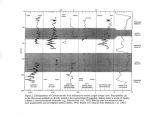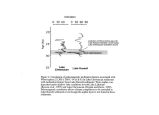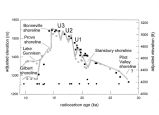| OCR Text |
As an impression of coUectin in Nevada, Fran wrote on 31 July 1938: " After lunch we went down into Grass Valley and then Pleasant Valley. The first didn't have any grass and the second wasn't pleasant!! But that's typical of Nevada valleys. And you can be sure if it says fish that there won't be any there!! Or else they'll be carp." Again, paraphrasing: " We drove over the longest, bumpiest road I've ever been on- about 40 miles ( 64 km). I was positively seasick by the time we got done. We camped at a spring meadow about 2 Vi miles ( 4 Ion) long. There were an awful lot of mosquitoes, but the didn't quite kill us." Fig. 2- 13. San Pedro River ( field no. M50- 55) just south of Charleston, Cochise County, Arizona. Note cut bank at right, the top of which represents the original ( early 1800s) valley level. Arroyo cutting, begun about 1880 in the Southwest, was probably due to a combination of severe overgrazing and trampling by livestock and an arid weather cycle ( Hastings and Turner 1965). Photograph by the Miller party, 24 April 1950. Robert Rush Miller, Clark Hubbs, and Frances Miller. 1991. Ichthyological exploration of the American West: The Hubbs- Miller Era, 1915- 1950. Pp. 19- 40 in W. L. Minckley and J. E. Deacon, eds., Battle against extinction. Native fish management in the American West. Tucson &. Arizona: The University of Arizona Press |

































































































































































